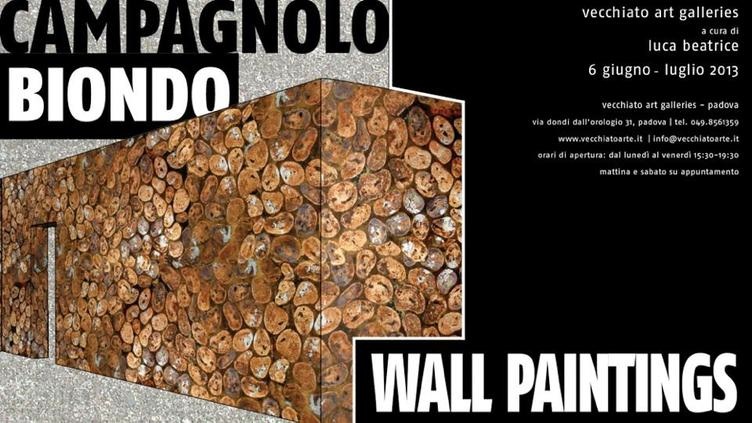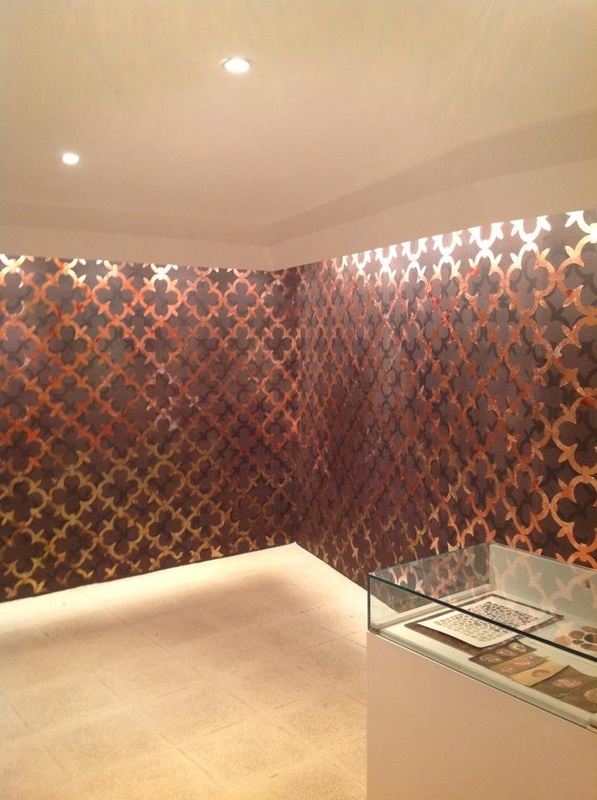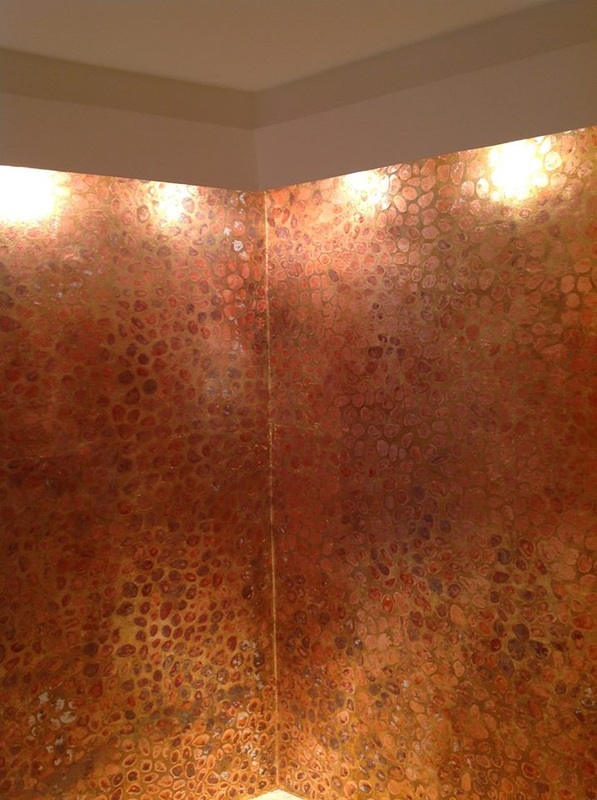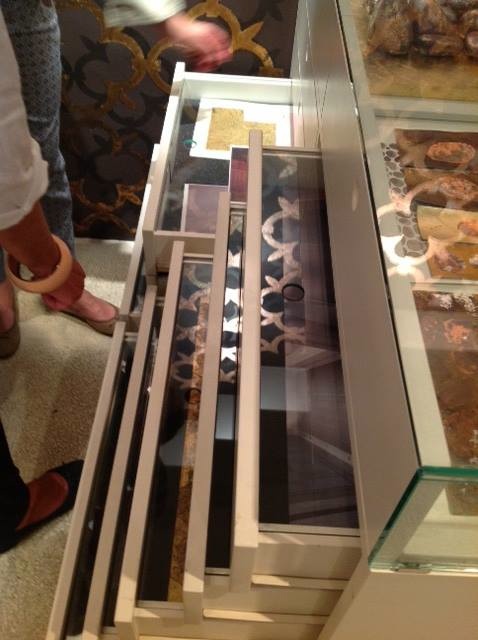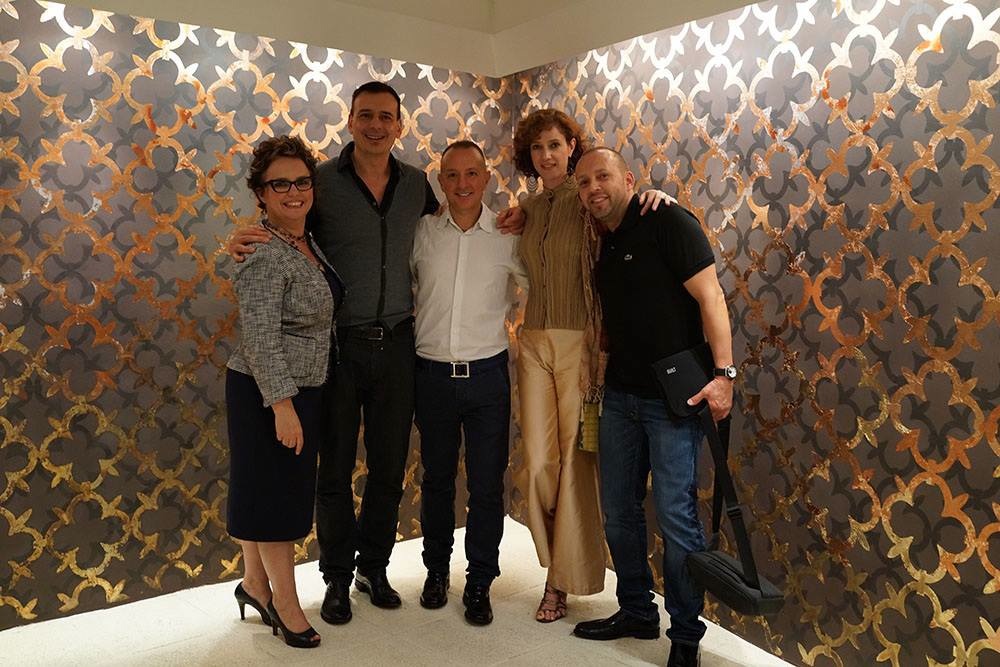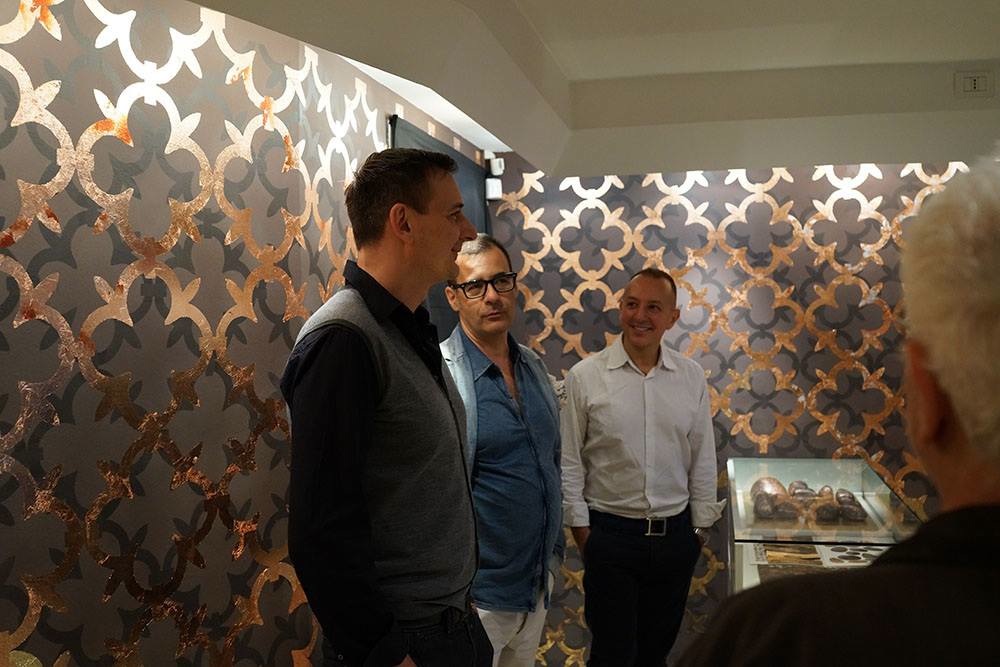Padova 2013, Vecchiato Gallery
More is More
In 1910 Adolf Loos wrote the well-known essay “Ornament and Crime” where he clearly explained that any embellishment on the façade or inside a building was to be considered an avoidable excess even childish and pointless. The literary application of this principle in the italian language, replacing the conjunction “e” (and) with the verb “é” (is), marked the prevalent style of art in the last century, in a progressive reduction of the ornament to its extreme essence to the point of reaching the Minimalism of the 70s with its cult slogan “Less is More”.
Paradoxically, painting left behind the concept of bidimensionality to invade the space and, at the same time, painting itself underwent a reduction to simple and repetitive appearance therefore the author, the artist, is no longer necessary and can be replaced with the organization of a method similar to mass production such as design.
Ours is an age where the “hand-made” aesthetic has regained momentum and the know how of the man/craftsman, according to sociologist Richard Sennet, lends a new value to the work of art, a preciousness which had been, if not cancelled, at least confined to a subordinate role. This is the intriguing and brave choice recently made by the two artists Paolo Campagnolo and Salvo Biondo, after having worked in various cities of the world (New York, Istanbul, Barcelona, Sydney, Tokyo) with their interior design projects. Their passion for colour and images interacts with a careful research of the history of the location where they operate. For the first time in Padova, in the main headquarters of Galleria Vecchiato, they created two artist rooms, where the lavishness of gold prevails, and still, they combine the classical italian tradition with a skilled research on techniques, expressions and artwork used in contemporary paintings, particularly in what is known by the name of Expanded Painting, where the tridimensional space is favoured.
In this original experiment of the decontextualization of interior design and raising it to a level of individual creation, Campagnolo and Biondo transform the gallery space into a real “art box”, as usual inspired by the décor of the location, aware of its historical memory but with a repositioning at the present day.
The designs in the background of their work are not a legacy with the concept of decoration tout court. They are inspired by the antique paving of the old town centre of Padova and by the ornaments taken from the gates of the Palazzo della Ragione, built between 1218 and 1306, originally the headquarters of the courthouse, and where a certain Giotto already had tackled the task of wall painting, and produced a huge fresco which was destroyed during a fire in 1420.
In their concept, which surpasses the minimalist wall painting movement, adding precious value to the artwork, the taboo of “Less is More” is swept away and is replaced by a new philosophy of “More is More”, a new perception of painting considered as a real contemporary challenge.
Luca Beatrice
In 1910 Adolf Loos wrote the well-known essay “Ornament and Crime” where he clearly explained that any embellishment on the façade or inside a building was to be considered an avoidable excess even childish and pointless. The literary application of this principle in the italian language, replacing the conjunction “e” (and) with the verb “é” (is), marked the prevalent style of art in the last century, in a progressive reduction of the ornament to its extreme essence to the point of reaching the Minimalism of the 70s with its cult slogan “Less is More”.
Paradoxically, painting left behind the concept of bidimensionality to invade the space and, at the same time, painting itself underwent a reduction to simple and repetitive appearance therefore the author, the artist, is no longer necessary and can be replaced with the organization of a method similar to mass production such as design.
Ours is an age where the “hand-made” aesthetic has regained momentum and the know how of the man/craftsman, according to sociologist Richard Sennet, lends a new value to the work of art, a preciousness which had been, if not cancelled, at least confined to a subordinate role. This is the intriguing and brave choice recently made by the two artists Paolo Campagnolo and Salvo Biondo, after having worked in various cities of the world (New York, Istanbul, Barcelona, Sydney, Tokyo) with their interior design projects. Their passion for colour and images interacts with a careful research of the history of the location where they operate. For the first time in Padova, in the main headquarters of Galleria Vecchiato, they created two artist rooms, where the lavishness of gold prevails, and still, they combine the classical italian tradition with a skilled research on techniques, expressions and artwork used in contemporary paintings, particularly in what is known by the name of Expanded Painting, where the tridimensional space is favoured.
In this original experiment of the decontextualization of interior design and raising it to a level of individual creation, Campagnolo and Biondo transform the gallery space into a real “art box”, as usual inspired by the décor of the location, aware of its historical memory but with a repositioning at the present day.
The designs in the background of their work are not a legacy with the concept of decoration tout court. They are inspired by the antique paving of the old town centre of Padova and by the ornaments taken from the gates of the Palazzo della Ragione, built between 1218 and 1306, originally the headquarters of the courthouse, and where a certain Giotto already had tackled the task of wall painting, and produced a huge fresco which was destroyed during a fire in 1420.
In their concept, which surpasses the minimalist wall painting movement, adding precious value to the artwork, the taboo of “Less is More” is swept away and is replaced by a new philosophy of “More is More”, a new perception of painting considered as a real contemporary challenge.
Luca Beatrice
“Art does not reproduce the visible; rather, it makes visible”
The work of the two artists, Salvo Biondo and Paolo Campagnolo, also known as ‘Cambio’, fits Paul Klee’s description perfectly. They explore the concept of ‘mutation’ through an intimate dialogue that begins with a spiritual awakening and the process of 'healing' the soul that evolves from a profound journey into self-awareness. The theme of regenerating the soul through an evolution, comes from that timeless context of mythology, and develops into an ‘opera d’arte’ through the use of a new sense of time and ritual. The choice of the mythological dimension is not just a useful pretext to invent fascinating and creative displays, but rather comes from a precise poetic selection that allows the artists to reach the subconscious layer in which all traces of experience and memories are contained. The numerous sculptured tapestries by the artists are the result of a choice of shape and form that takes the spectator on a fascinating journey, in a somewhat archaic and mysterious atmosphere where archetypes are viewed in a contemporary context and reflect those powerful experiences which manifest as Art.
The work of the two artists, Salvo Biondo and Paolo Campagnolo, also known as ‘Cambio’, fits Paul Klee’s description perfectly. They explore the concept of ‘mutation’ through an intimate dialogue that begins with a spiritual awakening and the process of 'healing' the soul that evolves from a profound journey into self-awareness. The theme of regenerating the soul through an evolution, comes from that timeless context of mythology, and develops into an ‘opera d’arte’ through the use of a new sense of time and ritual. The choice of the mythological dimension is not just a useful pretext to invent fascinating and creative displays, but rather comes from a precise poetic selection that allows the artists to reach the subconscious layer in which all traces of experience and memories are contained. The numerous sculptured tapestries by the artists are the result of a choice of shape and form that takes the spectator on a fascinating journey, in a somewhat archaic and mysterious atmosphere where archetypes are viewed in a contemporary context and reflect those powerful experiences which manifest as Art.
